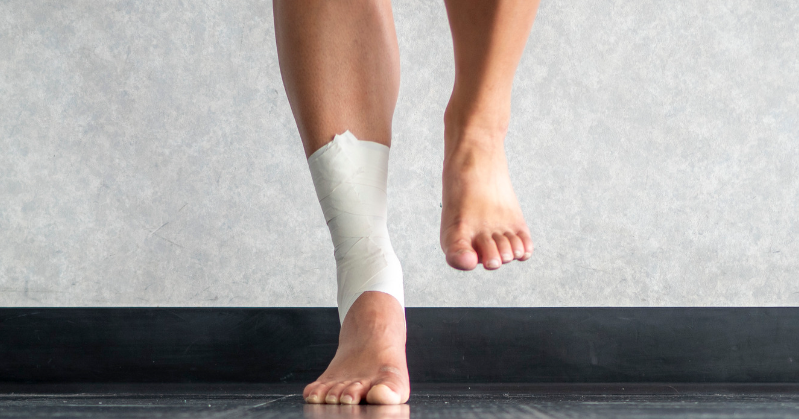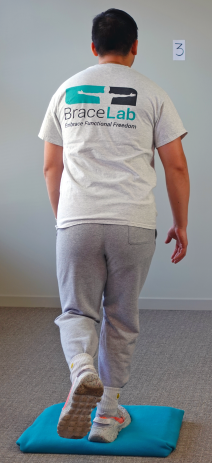Minimizing Ankle Re-Injury

March 2023 No. 31
Minimizing Ankle Re-Injury
by Jerry Ditz, DPT, Dip. Osteopractic, Cert. SMT, Cert. DN
The ankle sprain re-injury rate is more than 40% and re-injury leads to chronic ankle instability. Our Clinical Clue No. 12 discussed exercise recommendations for ankle sprain/instability patients that simultaneously challenges the three major sensory input channels for balance. Based on this recommendation, I added visual and vestibular challenges for my patients in the latter stages of rehabilitation to minimize risk of re-injury.
But a recent article on the proprioceptive, vestibular, and visual systems in individuals with and without chronic ankle instability brought to light the impact fatigue may have on these patients. This article urged me to consider how to screen for fatigue in late-stage ankle sprain/instability patients.


Create Baseline Activity Score
First, establish a baseline activity score for proprioception exercise, visual exercise, and vestibular exercise.
Proprioceptive: Have the patient complete a standard timed single leg balance test.
Visual: Have the patient perform the hopping exercise described in Clinical Clue No. 12.


Determine a percentage score based on the number of hops out of 10 the patient can land with correct ankle and foot position.
Vestibular: Have the patient perform the hopping exercise in Clinical Clue No. 12 with the head turn. Determine a percentage score based on the number of hops the patient can land with correct foot and ankle position.




Produce Anaerobic or Aerobic Fatigue
Next, create a fatigue condition for your patient.
Aerobic Athletes: Have the patient complete the Self-Paced VO2 Max Test.
Anaerobic Athletes: Have the patient complete the 30-s Continuous Jump Test.
Determine if Scores Indicate Fatigue
Retest to determine the effect of fatigue.
Have the patient complete the same three proprioceptive, visual, and vestibular exercises used for the baseline activity score. Compare these results to the baseline scores.
• If no change is noted, the patient’s overall fitness level need not be a primary focus during the end stages of rehabilitation.
• If the post-fatigue scores are lower, include the proprioceptive, visual, and vestibular activities in the patient’s general conditioning activities to help prevent a recurrent ankle sprain.
Case Example
JQ, a 19-year-old female college basketball player, sustained her first ankle sprain eight months ago and re-sprained her ankle six months later. She returned to physical therapy during her offseason with the complaint of up to four episodes of non-painful ankle instability (giving away) per month for the last three months. JQ’s baseline and post fatigue test results were:


Because JQ’s post-fatigue scores were lower, she can likely benefit from adding proprioceptive, visual, and vestibular exercises to her general conditioning program.
Conclusion
Consistently evaluating treatment approaches with updated evidence is challenging for all clinicians. Because ankle re-injury rates continue to be higher than in most other diagnoses, it is important to review all systems that impact your patients’ risks. With fatigue demonstrated to have a negative impact on ankle stability, patients may benefit from additional screening until further research is more conclusive.
Download Clinical Pearl No. 31, Minimizing Ankle Re-Injury, March 2023
© BraceLab; 2023 all rights reserved
Disclaimer: BraceLab Clinical Pearls are intended to be an informal sharing of practical clinical ideas; not formal evidence-based conclusions of fact.
